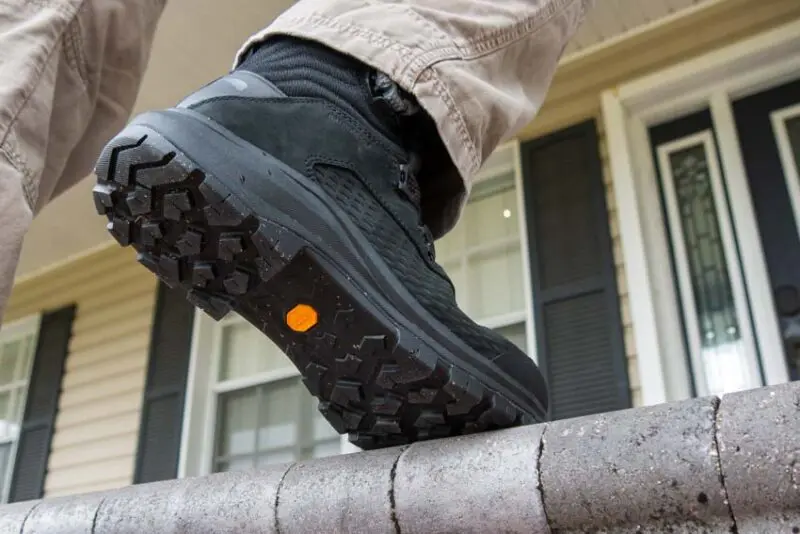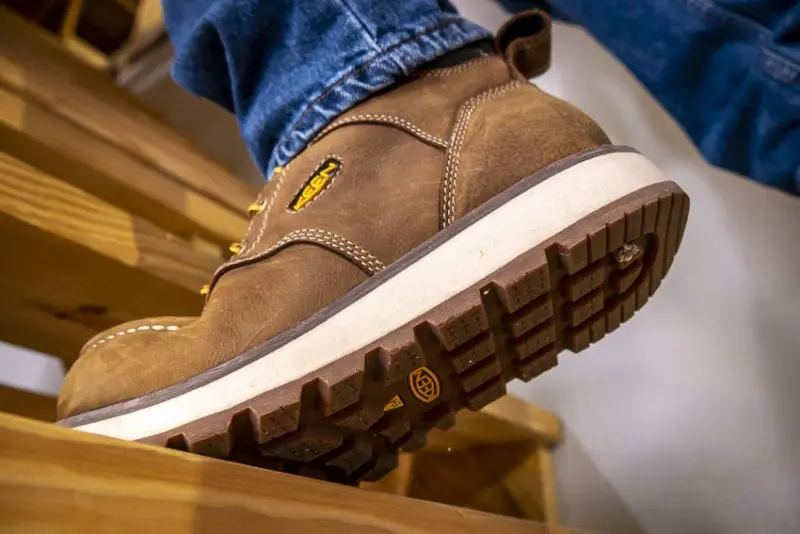Wedge sole work boots are becoming more common and many people sing their praises. But is it just a trend, or is there something more? In this article, I’ll compare wedge vs heeled sole work boots and help you decide if one is better than the other for the way you work.
Wedge vs Heeled Sole Work Boots: Basic Characteristics

The primary advantage wedge soles claim is additional comfort. When you look at a heeled boot next to a wedge boot, you can see that the wedge style makes more surface contact with the ground. That spreads your weight out over a larger area and relieves some of the stress on your heel and forefoot.
There’s a bit more to it than just weight distribution, though. Most work boots with a heel elevate the back of the boot higher than the toe box. That forward lean adds some fatigue to your calves as those muscles engage to help support you. On the other hand, a wedge sole design tends to keep your foot more even from back to front.
Case closed—everyone should wear wedge sole work boots, right?
Not necessarily.
Wedge vs Heeled Sole Work Boots: Work Surfaces

The surface you work on comes into play. On hard surfaces such as concrete, asphalt, and steel, you really feel the comfort enhancement a wedge sole offers. On bare or soft ground, it makes a minimal improvement at best. In some cases, wearing a wedge boot on bare ground can actually be worse.
It’s all about the tendencies of the two styles.
Wedge soles tend to have shallow tread that runs the full width of the boot. Those soles also tend to be a little softer, creating maximum surface contact and grip against hard, flat surfaces.
On the other hand, heeled boots usually have an outsole with deep lugs that press into bare and soft surfaces, creating traction where wedges can easily slip. A 90° heel can also give you a tactile feel of where your feet are as you’re climbing and working on ladders.
Think of it like the difference between touring and off-road tires for your vehicle. Touring tires are comfortable and quiet on the road but have a hard time getting traction once you leave the asphalt. Off-road tires are great for keeping your vehicle moving through dirt and mud, but are noisy and add vibration when you’re driving down the highway.
There’s something else to consider as well: stability. Because wedge soles are purpose-built for hard, flat surfaces, they are less likely to have a stability shank, and their softer outsole is more prone to rolling or twisting on softer, uneven surfaces.
The opposite is true for heeled work boots. They’re more likely to include a stability shank, and their beefier, stiffer outsole resists rolling and twisting better.
Okay, so wedge work boots for hard surfaces and heeled work boots for bare ground, right?
Well… yes, but…
Wedge vs Heeled Sole Work Boots: Bucking Tradition

I used the words “tends” and “likely” very intentionally earlier. As wedge sole work boots have become more popular, manufacturers have shifted away from traditional norms as they innovate. There are now hybrid designs with a wedge design attached to a stiffer outsole with an aggressive tread, effectively blending the two styles into a “best of both worlds” option.
Best of all, they’re highly effective in my experience. The combination of comfort, stability, and traction has kept these hybrid styles at the top of our best work boots recommendations for years now.
The final factor doesn’t have anything to do with the outsole design. Midsole innovation has introduced lightweight and super-cushy midsoles that improve comfort more than a wedge can over a heeled boot by itself. Since these midsoles are making their way into both styles, even heeled work boots can feel plush on hard surfaces.
The Bottom Line
So, where does that leave us in the final heeled vs wedge sole work boots debate?
My recommendation is to start with an outsole that has the traction and stability you need. Then, look for a model with one of the modern, ultra-cushy midsoles. From there, find the look you like and a size that fits, and you shouldn’t have any trouble keeping your feet comfortable on the longest work days.



